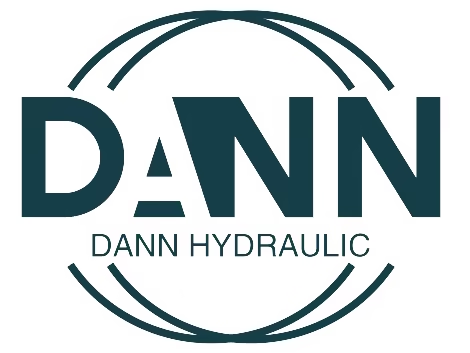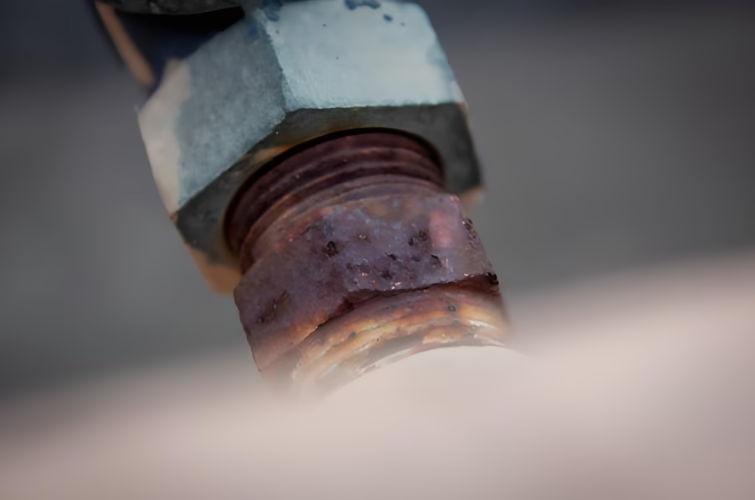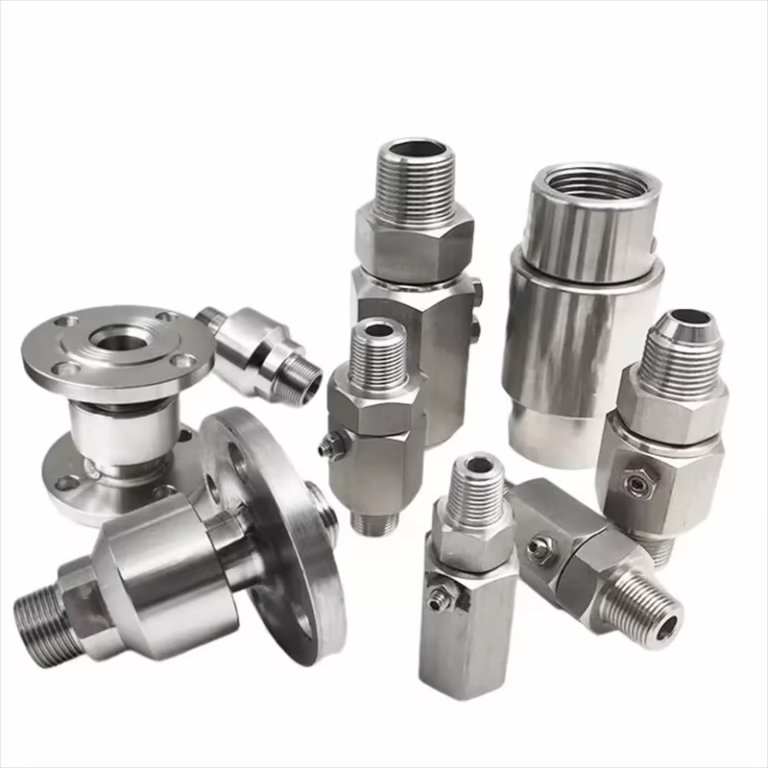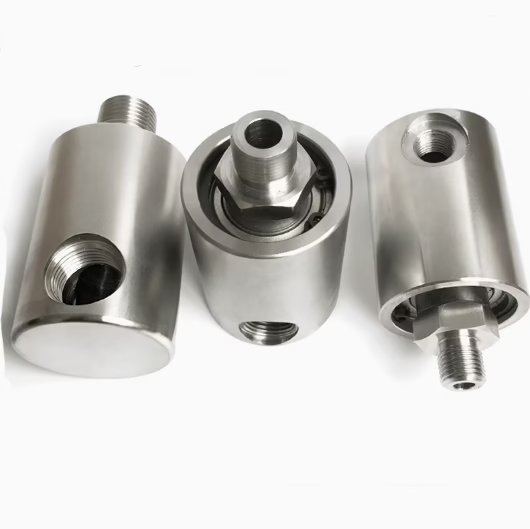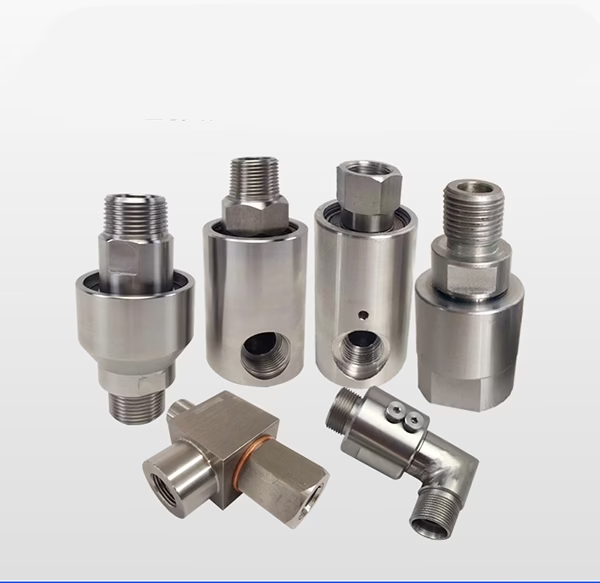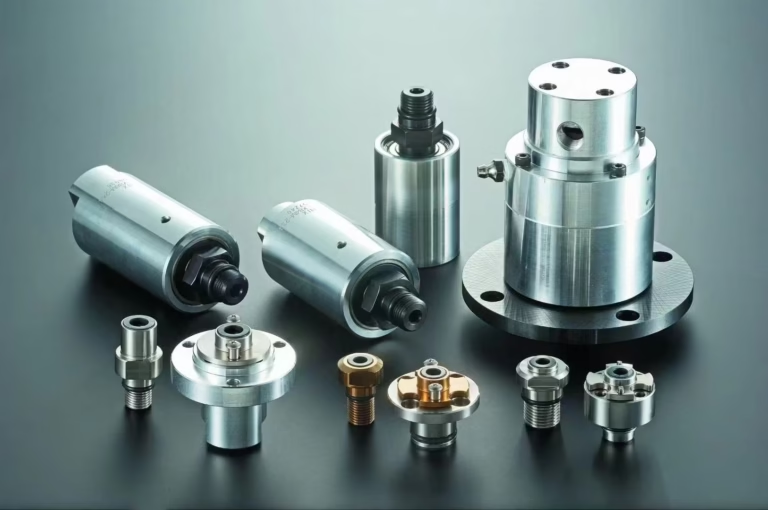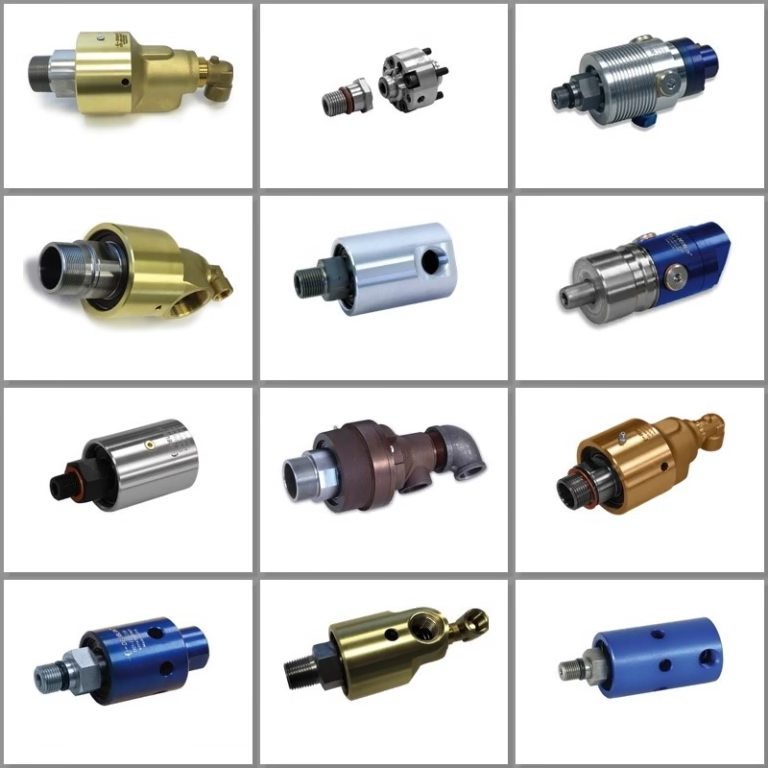What causes rotary joint failure?
Rotary joints (also known as rotary unions or swivel joints) are the unsung heroes of industrial machinery. From paper production and textile manufacturing to rubber processing and continuous casting, these precision components are responsible for transferring fluid media (steam, water, thermal oil, hydraulic fluid, or air) from a stationary supply pipe to a rotating piece of machinery. When a rotary joint fails, the consequences are immediate and often costly: unscheduled downtime, leaked media, safety hazards, and damaged equipment. Understanding what causes rotary joint failure is the first step toward extending the lifespan of your machinery and optimizing your maintenance schedule.
In this deep dive, we will explore what causes rotary joint failure? The common culprits behind premature failure, the signs you should look for, and actionable strategies to prevent these issues before they halt your production line.
What Causes Rotary Joint Failure?
1. Seal Degradation and Leakage
Seals are the backbone of rotary joint functionality, preventing leaks and maintaining pressure integrity. However, they are also the most vulnerable to failure due to:
1.1Material Incompatibility
Seals made from unsuitable materials can degrade when exposed to aggressive media like high-temperature steam, corrosive chemicals, or abrasive fluids. For instance, synthetic rubber seals may harden or crack under prolonged thermal stress (e.g., exceeding 200°C).
1.2 Mechanical Wear
Over time, friction between sealing surfaces (e.g., graphite vs. silicon carbide) can erode seals, especially in high-speed applications. Balanced seals, which reduce contact pressure, are designed to mitigate this but require precise alignment.
Wear and tear is one of the most prevalent causes of rotary joint failure. Continuous rotation and movement gradually degrade the seals, bearings, and other components over time. This degradation can lead to leaks, diminished performance, and ultimately, the complete breakdown of the joint.
Seals
Seals are integral to rotary joints as they prevent fluid or gas leakage. Nevertheless, they are also among the most vulnerable components, constantly exposed to friction, pressure, and temperature fluctuations. Common forms of seal wear include:
Abrasive Wear: This occurs when hard particles, such as dirt or debris, infiltrate the joint and scratch the seal surface. Abrasive wear can be attributed to poor filtration, damaged pipelines, or improper installation.
Erosion: Similar to abrasive wear, erosion is caused by the high-velocity flow of fluids or gases. It typically occurs when the joint operates under high pressure or when the fluid contains abrasive particles.
Chemical Attack: Certain fluids or gases can react with the seal material, causing it to degrade or swell. This reaction can lead to leaks and a decline in seal performance. Chemical attacks can be mitigated by using seals made of compatible materials and by properly treating the fluids or gases.
Bearings
Bearings support the rotating shaft of the rotary joint and reduce friction. However, they can also wear out over time, especially if not properly lubricated or if subjected to excessive loads. Common types of bearing wear include:
Fatigue Wear: Fatigue wear occurs when the bearing is repeatedly exposed to cyclic loads. This can cause cracks to form on the bearing surface, eventually failing. Fatigue wear can be prevented by using high-quality bearings and ensuring that the joint is not overloaded.
Corrosion: Corrosion can occur when the bearing is exposed to moisture, chemicals, or other corrosive substances. This can cause the bearing to rust and lose its structural integrity. Corrosion can be avoided by using bearings made of corrosion-resistant materials and by maintaining the joint properly.
Lubrication Failure: Adequate lubrication is essential for the smooth operation of bearings. If bearings are not properly lubricated, they can overheat and wear out rapidly. Lubrication failure can be caused by insufficient lubricant, contaminated lubricant, or improper lubrication techniques.
1.3 Contamination
Particulate matter, rust, or dirt in the media can scratch sealing surfaces, compromising their mirror-like finish. This is common in industrial environments like steel mills or paper manufacturing.
2. Misalignment and Improper Installation
Rotary joints rely on precise alignment to function optimally. Issues arise when:
2.1 Side Loading
Excessive lateral force from connected piping can bend the joint, straining seals and bearings. Self-supported joints are more susceptible, while bracket-mounted designs better absorb misalignment.
2.2 Incorrect Mounting
Over-tightening flange bolts or uneven torque distribution may warp the joint housing, leading to premature wear.
Misalignment: Poor alignment between the joint and the connected components can create mechanical stress, leading to accelerated wear.
Incorrect Torque: Applying too much or too little torque during installation can compromise the joint’s sealing capabilities.
Ignoring Manufacturer Instructions: Not following specific assembly instructions can lead to critical errors that affect performance.
2.3 Shaft Runout
Wobbling or axial displacement in rotating shafts accelerates seal wear and causes vibration-induced fatigue.
2.4 Excessive Vibration
High levels of vibration can damage rotary joints, often caused by:
Imbalances in Rotating Components: Uneven weight distribution can lead to excessive vibrations.
Incorrect Alignments: Misalignments during installation contribute to instability.
3. Overloading Beyond Design Limits
Exceeding operational thresholds is a leading cause of catastrophic failure:
3.1 Pressure Overload
Rotary joints are rated for specific pressure ranges (e.g., 1.5 MPa for standard models). Overpressure can rupture seals or deform internal components, as seen in hydraulic systems operating above 15 MPa.
3.2 Thermal Stress
Prolonged exposure to temperatures beyond the joint’s rating (e.g., >200°C) can melt seals or warp metal parts. Thermal oil or steam applications are particularly prone to this.
3.3 Speed Limitations
High rotational speeds generate centrifugal forces that destabilize seals. For example, microwave rotary joints in radar systems may fail at RPMs exceeding their design capacity.
4. Material Fatigue and Corrosion
Over time, internal components such as seals, bearings, and sliding surfaces can degrade due to:
Lack of Lubrication: Insufficient lubrication accelerates wear.
Harsh Operating Conditions: Operating in aggressive environments can hasten deterioration.
Neglecting Maintenance: Failing to perform regular maintenance checks increases the likelihood of failure.
4.1 Abrasive Media
Fluids containing particulates (e.g., slurries in mining) erode internal components like ball bearings or graphite seals, reducing structural integrity.
4.2 Chemical Corrosion
Exposure to acids, solvents, or saltwater can corrode metal housings or critical parts. Stainless steel joints are often preferred for corrosive environments.
4.3 Cyclic Fatigue
Repeated thermal cycling or pressure fluctuations weaken materials over time. Fiber optic rotary joints, for instance, may develop microfractures in ceramic ferrules after millions of rotations.
5. Inadequate Maintenance Practices
Neglecting routine maintenance accelerates failure:
5.1 Lubrication Failure
Bearings and rotating surfaces require regular lubrication. Dry operation increases friction, leading to overheating and seizure.
5.2 Ignoring Wear Indicators
Symptoms like increased torque, unusual noise, or minor leaks often precede major failures. For example, a spike in insertion loss in fiber optic rotary joints signals contamination or ferrule damage.
5.3 Infrequent Inspections
Without periodic checks for alignment, seal integrity, or corrosion, minor issues escalate into critical failures.
6. Design and Manufacturing Flaws
Even high-quality joints can fail due to inherent weaknesses:
6.1 Poor Seal Technology
Older designs using O-rings (DuraSeal™) may underperform in high-pressure environments compared to modern mechanical seals.
6.2 Substandard Materials
Low-grade metals or composites may lack the durability needed for demanding applications. Patented alloys or silicon nitride components are often critical for longevity.
6.3 Inadequate Testing
Joints not subjected to computer-simulated operating conditions may have unaddressed stress points.
7. High Temperatures
High temperatures can also contribute to rotary joint failure. When the joint operates at elevated temperatures, the seals, bearings, and other components may be subjected to thermal stress, which can lead to deformation, cracking, and other problems.
7.1 Thermal Expansion
Thermal expansion occurs when the joint is heated, causing the components to expand. If this expansion is not properly accounted for, it can subject the seals and bearings to excessive stress, leading to premature failure. To prevent thermal expansion issues, it is important to use joints designed to withstand high temperatures and to allow for proper expansion and contraction.
7.2 Heat Generation
Heat generation can occur when the joint operates at high speeds or under high loads. This can cause the seals and bearings to overheat, leading to premature wear and failure. To prevent heat generation problems, it is important to use properly designed joints and ensure that the joint is not overloaded.
8. Design and Material Issues
Design and material issues can also cause rotary joint failure. If the joint is not designed appropriately or if unsuitable materials are used, it may not be able to withstand the operating conditions, resulting in premature failure.
8.1 Inadequate Design
An inadequate design can result in a rotary joint that cannot handle the required flow rates, pressures, or temperatures. This can lead to leaks, reduced performance, and ultimately, complete failure of the joint. To ensure proper design, it is important to collaborate with a reputable manufacturer and provide accurate information about the operating conditions.
8.2 Material Compatibility
The materials used in the construction of the rotary joint must be compatible with the fluids or gases being transferred. If incompatible materials are used, they may react with the fluid or gas, causing degradation or failure of the joint. To ensure material compatibility, it is important to consult with the manufacturer and select the appropriate materials for the application.
9. Improper Utilization
Operating outside the specified parameters (pressure, temperature, speed) can lead to:
Component Deformation: Exceeding limits may deform parts of the rotary joint.
Seal Leakage: High pressures can cause seals to fail, resulting in leaks.
10. Radial and Axial Loads:
Excessive radial (perpendicular) and axial (parallel) loads on the rotary joint can:
Compromise Sealing Integrity: Overloading may lead to leaks.
Accelerated Bearing Wear: Increased stress on bearings can shorten their lifespan.
11. Contamination
The presence of dust, dirt, or abrasive particles in the fluid can lead to:
Seal Damage: Contaminants can wear down seals and bearings, leading to leaks and failures.
12. Pressure Spikes and Pulsation:
Sudden changes in pressure can shock seals and cause premature wear or failure. This often occurs when valves are closed while fluid is still hot, leading to overpressure conditions.
13. Incompatible Lubricants
Mixing different types of lubricants can cause chemical reactions that degrade lubrication effectiveness, leading to bearing failure and increased wear on internal parts.
14. Environmental Factors
High temperatures and pressures beyond design specifications can lead to:
Material Degradation: Components may weaken or deform under extreme conditions.
15. Lack of Regular Maintenance
Failing to conduct routine inspections and maintenance checks increases the risk of unnoticed wear or damage that could lead to catastrophic failures.
Troubleshooting Checklist: Diagnosing Your Failure
If you are staring at a leaking rotary joint right now, use this quick diagnostic list to identify the root cause:
Is the leak steady or intermittent?
- Steady leak: Usually indicates worn seal faces or foreign particles stuck between faces.
- Intermittent leak: Often points to misalignment or vibration issues.
What do the seal faces look like?
- Scratched/Grooved: Contaminated media (abrasives).
- Heat Checked (Radial cracks): Dry running or excessive PV value.
- Carbon Blistering: Chemical incompatibility or overheating.
How do the bearings feel?
- Gritty/Rough: Contamination or bearing failure.
- Blue/Discolored: Overheating due to lack of lubrication.
How to Extend the Life of Your Rotary Joints
Preventing failure isn’t just about buying the most expensive part; it’s about holistic system maintenance.
1. Optimize Your Installation
Follow the manufacturer’s manual religiously. Ensure the machine shaft is clean and burr-free. Use a dial indicator to check run-out (concentricity) during installation to ensure it is within tolerance (usually < 0.002 inches).
2. Implement Filtration
Install Y-strainers or filters upstream of the rotary joint. A simple 60-mesh screen can catch the debris that would otherwise destroy a precision seal.
3. Switch to Flexible Hoses
Replace hard pipe connections with flexible metal hoses. Ensure the hoses are installed with a gentle curve—never pulled tight or twisted.
4. Scheduled Maintenance
Don’t wait for a leak. Establish a preventative maintenance schedule where you check for vibration, unusual noise, and heat generation. Replacing a seal kit during a planned shutdown is significantly cheaper than an emergency replacement during peak production.
Conclusion
What Causes Rotary Joint Failure? Rotary joint failure is rarely due to a single cause but rather a combination of mechanical stress, environmental factors, and maintenance oversights. In conclusion, rotary joint failure can be attributed to a variety of factors, including wear and tear, improper installation, contamination, high temperatures, and design and material issues. By addressing these common causes through proper installation, regular maintenance, and adherence to operational specifications, the lifespan and reliability of rotary joints can be significantly enhanced. By understanding these factors and taking the necessary preventive and corrective measures, you can ensure the reliable operation of your rotary joints and avoid costly downtime and production losses. If you suspect that your rotary joint is experiencing problems, it is important to contact a qualified technician promptly for diagnosis and repair.
For further details, refer to us for tailored solutions.
